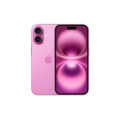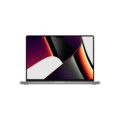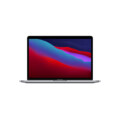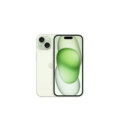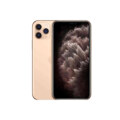Apple iPhone 14




Specs
General
| Device Type | Apple Iphone |
| Model | A2882, A2649, A2881, A2884, A2883 |
| Announced | 07 September, 2022 |
| Released | 16 September, 2022 |
| Status | Available |
Design
| Water Resistant | Water resistant (up to 30 minutes in a depth of 6 meter) |
| Dimensions | 146.7 x 71.5 x 7.8 mm |
| Weight | 172 g |
| Protection | Glass front (Corning-made glass), glass back (Corning-made glass), aluminum frame |
| Colors | Midnight, Purple, Starlight, Blue, Red |
Display
| Refresh Rate | 60 Hz |
| Display Type Display Technology => A number of display technologies and types used in mobile phones => TFT (Thin Film Transistor), IPS (In-Place Switching), OLED (Organic Light Emitting Diode), AMOLED (Active-Matrix Organic Light-Emitting Diode), Super AMOLED (an even advanced version of AMOLED), Resistive Touchscreen (Resistive touchscreens contain two layer of conductive material with a very small gap between them which acts as a resistance), Capacitive Touchsceen (Capacitive touchscreen technology consists of a layer of glass coated with a transparent conductor) | Super Retina XDR OLED, HDR10, Dolby Vision, 800 nits (HBM), 1200 nits (peak) |
| Size | 6.1 inches (15.49 cm) |
| Resolution | 1170x2532 px (FHD+) |
| Display Colors Display Colors is refers to the number of different shades of colors that the screen is capable of displaying => 64K colors, 256K colors and 16 million colors, Obviously 16M is highest available range of colors and better than others. | 16M colors |
| Pixel Density Pixel Density (PPI) is refers to the concentration of pixels on a particular display, measured in pixels per inch (ppi). Pixel density is calculated by dividing the diagonal pixel resolution of a display by its diagonal size, higher pixel density better display quality. | 457 ppi |
| Touch Screen | 3D Touch Touchscreen, Multi-touch |
| Display Protection Display Protection => Gorilla Glass is a special alkali-aluminosilicate glass shield with exceptional damage resistance that helps protect mobile displays from scratches, drops, and bumps of everyday use, It is always better to go for a smartphone with Gorilla Glass for that added protection and peace of mind. | Ceramic Shield glass |
| Features |
HDR10, Dolby Vision, 800 nits (HBM), 1200 nits (peak) Emergency SOS via satellite (SMS sending/receiving), Glass front + Gorilla Glass), Glass back + Gorilla Glass), IP68 dust/water resistant (up to 6m for 30 mins), Apple Pay (Visa, MasterCard, AMEX certified), Document editor |
| Secondary Display | No |
Camera
| Front Camera | 12 MP, f/1.9, 23mm (wide), 1/3.6", PDAF SL 3D, (depth/biometrics sensor) |
| Camera Setup | Double |
| Main Camera Camera is able to capture photographs and usually videos, The most important characteristics of a camera are the resolution (measured in megapixels), lens focus type (fixed or automatic), higher megapixel cameras are known to capture higher quality photos, but not always a good measurement of the photos quality. | 12 MP, f/1.5, 26mm (wide), 1/1.7", 1.9µm, dual pixel PDAF, sensor-shift OIS 12 MP, f/2.4, 13mm, 120˚ (ultrawide) |
| Image | 4000 x 3000 Pixels |
| Video | 4K@24/25/30/60fps, 1080p@25/30/60/120/240fps, HDR, Dolby Vision HDR (up to 60fps), stereo sound rec. |
| Camera Features | HDR (photo/panorama), Video (4K@24/25/30/60fps, 1080p@25/30/60/120/240fps, HDR, Dolby Vision HDR (up to 60fps), Cinematic mode (4K@30fps), stereo sound rec.) |
| Flash Flash Light => There is commonly two types of flash lights are used in camera mobile phones, LED Flash (LED flash offers lower power consumption with drive circuitry that takes up very little room, LEDs can be strobed faster than any other light source), Xenon Flash (xenon flash produces an extremely intense full-spectrum white light for a very short duration) | Dual-LED dual-tone flash, HDR (photo/panorama) |
Hardware
| Operating System OS => Every computer system run on a base software called Operating System (OS). Operating System controls all basic operations of the computer (such as smartphone, PDAs, tablet computers and other handheld devices). The Operating System allows the user to install and run third party applications (apps), apps are used to add new functionality to the device. | IOS 16 |
| Chipset Chipset is a group of integrated circuits designed to perform one or a more dedicated functions, often with real time computing constraints, Popular smartphones are equipped with more advanced embedded chipsets that can do many different tasks depending on their programming. | Apple A15 Bionic |
| CPU CPU (Central Processing Unit) mostly known as processors, CPU processes instructions in order to carry out certain functions that make your device operate properly. Processors are often described as the brain of computers, smartphones and tablets, Smartphones and tablets rely on processors to carry out their every task, Processors are an incredibly important factor in selecting any type of computing device, including your smartphone. | Hexa Core (3.23 GHz, Dual core, Avalanche + 1.82 GHz, Quad core, Blizzard) |
| Architecture | 64 bit |
| Fabrication | 5 nm |
| GPU GPU (Graphics Processing Unit) is a single-chip processor designed to rapidly manipulate and alter memory to accelerate the creation of images in a frame buffer intended for output to a display, This includes things such as lighting effects, object transformations, and 3D motion. | Apple GPU (Five-core graphics) |
| RAM (Memory) RAM (Random Access Memory) is a type of computer memory that can be accessed randomly, any byte of memory can be accessed without touching the preceding bytes that allows information to be stored and accessed quickly from random locations. RAM is the most common type of memory found in computer systems, smartphones, tablets and other electronic devices. | 6 GB |
| Internal Storage Internal Storage is a data storage space (flash memory) mostly used in smartphones, tablets and other electronic devices where operating system, apps, music, photos, videos, files and other user data Is stored. | 128/256/512GB Built-in |
| Card Slot Memory Card Slot is a special slot for inserting a memory card. Memory cards allow you to expand the phone's built-in memory, A memory card (sometimes called a flash memory card or a storage card) is a small storage medium used to store data such as text, pictures, audio, and video, for use on small, portable or remote computing devices such as mobile phones, mp3 players, digital cameras. | |
| Sensors Sensors are electronic components that detects and responds to some type of input from the physical environment. The specific input could be light, heat, motion, moisture, pressure and location, The output is generally a signal that is converted to use in computing systems, a location sensor, such as a GPS receiver is able to detect current location of your electronic device. | Accelerometer, Barometer, Compass, Face ID, Gyro, Proximity, Ultra Wideband (UWB) support |
Network
| SIM TYPE SIM (Subscriber Identity Module) is a small card that contains mobile network subscriber's account information. This allows the phone using the card to attach to a mobile network. The SIM card is most commonly associated with GSM and UMTS mobile networks. Moving a SIM card from one phone to another allows a subscriber to switch mobile phones without having to contact their mobile network carrier. SIM cards can also be used by a phone to store limited amounts of data, such as phone numbers and text messages. | Nano SIM |
| SIM Technology | Dual Sim, Dual Standby |
| 2G Network | GSM 850 / 900 / 1800 / 1900 |
| 3G Network | HSDPA 850 / 900 / 1700 / 1900 / 2100 |
| 4G Network |
LTE |
| 5G Network | SA/NSA/Sub6 |
Multimedia
| FM Radio | |
| Stereo Speakers | YES |
| Loudspeaker | YES |
| Audio Jack | Lightning to 3.5 mm headphone jack adapter |
| Audio Features | Dolby Atmos, Dolby Digital, Dolby Digital Plus |
Connectivity
| Wi-fi Wi-Fi is a popular wireless networking technology using radio waves to provide high-speed network connections that allows devices to communicate without cords or cables, Wi-Fi is increasingly becoming the preferred mode of internet connectivity all over the world. | Wi-Fi 802.11 a/b/g/n/ac/6, dual-band |
| Bluetooth Bluetooth is a wireless communications technology for exchanging data between mobile phones, headsets, computers and other network devices over short distances without wires, Bluetooth technology was primarily designed to support simple wireless networking of personal consumer devices. | v5.3 with A2DP, LE |
| GPS GPS The Global Positioning System is a satellite-based radio navigation system, GPS permits users to determine their position, velocity and the time 24 hours a day, in all weather, anywhere in the world, In order to locate your position, your device or GPS receiver must have a clear view of the sky. | Yes + A-GPS support, & GLONASS, GALILEO, QZSS |
| USB | Lightning, USB 2.0 |
| EDGE EDGE (Enhanced Data GSM Environment) is a wireless network technology generally considered the next step in the 2G network offers data transfer rates up to four times faster than ordinary GSM networks, Generally, EDGE is used for the purpose of wireless data transfer, such as sharing pictures and videos or browsing the Internet via a mobile phone connection. | |
| GPRS GPRS (General Packet Radio Service) is a packet oriented mobile data service on the 2G and 3G cellular communication system's global system for mobile communications (GSM), Generally, GPRS is used for the purpose of wireless data transfer, such as sharing pictures and videos or browsing the Internet via a mobile phone connection. | |
| Speed | 3G (HSPA 42.2/5.76 Mbps), 4G LTE-A, 5G capable, EV-DO Rev.A 3.1 Mbps |
| Wi-fi Hotspot | |
| NFC NFC (Near field communication) is a set of standards for smartphones and similar devices to establish peer-to-peer radio communications with each other by touching them together or bringing them into proximity, usually no more than a few inches. |
Features
| Messaging | iMessage, SMS (threaded view), MMS, Email, Push Email |
| Web Browser Web Browser => a web browser is a software application used to locate, retrieve and display content on the World Wide Web, including Web pages, images, video and other files, The primary function of a web browser is to render HTML, the code used to design or markup webpages. | HTML5 |
| Games | Built-in + Downloadable |
| Torch |
Battery
| Battery Type Battery Type => Cell phones run on various kinds of batteries depending on the manufacturer, phone size or shape and features. There are basically four types of cell phone batteries => Lithium Polymer, Lithium Ion, Nickel Metal Hydride and Nickel Cadmium. | Li-Ion (Lithium Ion) |
| Capacity Battery Capacity is a measure (typically in Amp-hr) of the charge stored by the battery, and is determined by the mass of active material contained in the battery. The battery capacity represents the maximum amount of energy that can be extracted from the battery under certain conditions. | 3279 mAh |
| Placement | Non-removable |
| Wireless Charging Wireless Charging (Inductive Charging) uses an electromagnetic field to transfer energy between two objects. This is usually done with a charging station. Energy is sent through an inductive coupling to an electrical device, which can then use that energy to charge batteries or run the device. | Yes |
| Talk Time Talk Time is the longest time that a single battery charge will last when you are constantly talking on the phone under perfect conditions, Ambient temperature and highly dependent on the cellular network environment such as the distance to the closest cell network tower. | up to 17 hrs |
| Music Play | up to 55 hrs |
| Extra |
Fast charging, 50% in 30 min (advertised), USB Power Delivery 2.0 MagSafe wireless charging 15W Qi magnetic fast wireless charging 7.5W |
Apple iPhone 14 Detailed Review
Introduction: The Apple iPhone 14 was launched in September 2022 as part of Apple’s flagship lineup. While it may appear similar to its predecessor, the iPhone 13, the iPhone 14 introduces several key upgrades in performance, camera capabilities, and safety features. This review provides an in-depth look at the iPhone 14, covering its design, display, performance, camera system, battery life, software, and more, along with a summary of its pros and cons.
Specifications at a Glance
- Display: 6.1-inch Super Retina XDR OLED (2532 x 1170 pixels, 460 ppi)
- Processor: Apple A15 Bionic chip with 6-core CPU, 5-core GPU, and 16-core Neural Engine
- RAM: 6 GB
- Storage Options: 128 GB, 256 GB, 512 GB
- Rear Cameras: Dual 12 MP system (wide f/1.5, ultra-wide f/2.4) with Sensor-Shift Optical Image Stabilization (OIS) and 4K Dolby Vision HDR video recording
- Front Camera: 12 MP TrueDepth camera (f/1.9) with autofocus
- Battery: Estimated 20 hours of talk time
- Water and Dust Resistance: IP68 rating (up to 6 meters for 30 minutes)
- Operating System: Originally iOS 16, upgradable to the latest iOS versions
- Audio: Stereo speakers, Lightning port (no headphone jack)
- Dimensions: 146.7 x 71.5 x 7.8 mm
- Weight: 172 grams
Design and Build Quality
Aesthetics:
- Familiar Design: The iPhone 14 maintains the same design language as the iPhone 13, featuring flat edges, a Ceramic Shield front cover, and an aerospace-grade aluminum frame.
- Color Options: It comes in a variety of colors:
- Midnight, Starlight, Blue, Purple, PRODUCT(RED)
Durability:
- Ceramic Shield: The front display is protected by Ceramic Shield, providing excellent durability and resistance to drops and scratches.
- IP68 Rating: The iPhone 14 is water-resistant up to 6 meters for 30 minutes, making it robust against spills, splashes, and dust exposure.
Ergonomics:
- Comfortable Size: The iPhone 14’s 6.1-inch display size strikes a good balance between usability and screen real estate, making it comfortable to hold and operate with one hand.
- Face ID: The TrueDepth camera system supports Face ID, providing fast and secure facial recognition for unlocking the phone and authorizing payments.
Overall, the Apple iPhone 14 offers a durable and stylish design that is both familiar and functional, making it a reliable choice for everyday use.
Display
Specifications:
- Size: 6.1-inch Super Retina XDR OLED Display
- Resolution: 2532 x 1170 pixels (460 ppi)
- Panel Type: OLED
- Color Gamut: Wide color (P3)
- True Tone: Adjusts display color temperature based on ambient lighting
- HDR Support: Supports HDR10 and Dolby Vision
- Contrast Ratio: 2,000,000:1
- Brightness: Up to 800 nits typical, 1200 nits peak (HDR content)
Performance:
- Vibrant Display: The Super Retina XDR OLED display delivers vibrant colors, deep blacks, and sharp details, offering an immersive viewing experience for content consumption, gaming, and everyday use.
- HDR Content: The display handles HDR content exceptionally well, with improved brightness, contrast, and color accuracy, making movies and photos look more lifelike.
- True Tone and Color Accuracy: True Tone technology ensures comfortable viewing by adjusting the color temperature to match ambient lighting. The display also boasts excellent color accuracy, making it ideal for tasks that require precise color representation.
- Smooth Performance: While the iPhone 14 lacks the ProMotion 120Hz refresh rate found on the Pro models, the 60Hz display still offers smooth performance for most everyday tasks.
In summary, the Apple iPhone 14’s display is one of the best in its class, offering vibrant visuals and excellent performance, even though it lacks the higher refresh rate of the Pro models.
Performance
Hardware:
- Processor: Apple A15 Bionic chip with 6-core CPU (two high-performance and four energy-efficient cores) and 5-core GPU
- RAM: 6 GB
Performance Evaluation:
- High-Speed Performance: The A15 Bionic chip powers the iPhone 14, delivering excellent performance across all tasks, including gaming, multitasking, and video editing. The additional GPU core compared to the iPhone 13 provides a slight boost in graphics performance.
- Efficient Power Usage: The efficiency cores in the A15 help manage power consumption, ensuring that battery life is maximized without sacrificing performance.
- AI and Machine Learning: The 16-core Neural Engine enables advanced machine learning tasks, improving the performance of features like photography, Siri, and app functionality.
Benchmark Scores:
- Geekbench 5: The iPhone 14 scores around 1,725 (single-core) and 4,750 (multi-core), reflecting its position as one of the top-performing smartphones on the market.
Overall, the Apple iPhone 14 offers fast and reliable performance, making it more than capable of handling any task, whether for casual use or more demanding applications.
Camera
The iPhone 14 features a refined dual-camera system that offers solid performance in a variety of photography and videography scenarios.
Rear Cameras:
- Primary Lens: 12 MP wide-angle lens with an f/1.5 aperture and Sensor-Shift Optical Image Stabilization (OIS)
- Ultra-Wide Lens: 12 MP ultra-wide-angle lens with an f/2.4 aperture and a 120° field of view
- Night Mode: Available on both lenses, Night Mode improves low-light photography, producing brighter and clearer images.
- Smart HDR 4: Adjusts contrast, color, and lighting in real-time for more balanced and detailed photos.
- Photographic Styles: Customizable photographic styles allow users to adjust tone and color, adding a personalized touch to photos.
- Cinematic Mode: Introduces a shallow depth of field and automatic focus transitions for professional-looking videos, now available in 4K at 30 fps.
Front Camera:
- Resolution: 12 MP TrueDepth camera
- Aperture: f/1.9
- Features: Autofocus, Night Mode, Deep Fusion, 4K video recording at 60 fps, and support for Animoji and Memoji
Camera Performance:
- Daylight Photography: The iPhone 14’s camera system excels in daylight conditions, capturing vibrant, detailed images with excellent dynamic range. The Smart HDR 4 feature ensures that highlights and shadows are well-balanced, even in challenging lighting conditions.
- Low-Light Photography: Night Mode on both rear lenses allows for bright and clear images in low-light conditions, making the iPhone 14 a solid performer in nighttime photography.
- Ultra-Wide Lens: The ultra-wide lens provides versatility in framing shots, allowing users to capture more of the scene, especially in tight spaces.
- Cinematic Mode: Cinematic Mode offers a new level of creativity in video recording, with automatic focus shifts that mimic the look of professional cinematography.
Video Recording:
- 4K Video at 60 fps: The iPhone 14 can record high-quality 4K videos at 60 frames per second, with excellent color accuracy and dynamic range.
- Action Mode: A new feature in the iPhone 14, Action Mode provides improved stabilization for smoother video recording during motion-intensive activities.
In conclusion, the Apple iPhone 14’s camera system is a strong performer, offering excellent versatility and quality for both photos and videos. While it lacks some of the advanced features found in the Pro models, it remains one of the best camera systems available in a smartphone.
Battery Life
Specifications:
- Battery Capacity: Estimated to provide up to 20 hours of talk time
- Charging Options: 20W fast charging, MagSafe wireless charging (15W), Qi wireless charging (7.5W)
- Battery Life: Up to 19 hours of video playback, 75 hours of audio playback
Performance:
- All-Day Battery Life: The iPhone 14 offers solid battery life, comfortably lasting through a full day of moderate to heavy usage. With less demanding tasks, it can stretch into a second day without needing a recharge.
- Efficient Power Management: The A15 Bionic chip’s energy-efficient design, combined with iOS optimizations, ensures that the iPhone 14 makes the most of its battery capacity.
- Fast Charging: With a 20W charger (sold separately), the iPhone 14 can reach 50% charge in about 30 minutes, making it easy to top up the battery quickly.
- MagSafe: The MagSafe wireless charging system offers a convenient way to charge the device, though it’s slightly slower than wired charging.
In summary, the Apple iPhone 14 provides dependable battery life, making it a reliable choice for users who need their phone to last through long days without frequent recharging.
Software
Operating System:
- Original OS: iOS 16
- Upgradability: The iPhone 14 continues to receive updates to the latest iOS versions, ensuring long-term software support and security updates.
User Experience:
- iOS Ecosystem: The iPhone 14 benefits from seamless integration within Apple’s iOS ecosystem, offering a smooth and intuitive user experience. Features like Continuity, Handoff, and AirDrop make it easy to work across multiple Apple devices.
- Performance Over Time: The A15 Bionic chip ensures that the iPhone 14 continues to perform exceptionally well even with new iOS updates and features.
- App Compatibility: The device remains compatible with all apps on the App Store, including those that take advantage of the latest hardware and software features.
Software Features:
- Face ID: Provides fast and secure facial recognition for unlocking the phone and authorizing payments.
- Animoji and Memoji: Leverage the TrueDepth camera to create animated emojis and personalized avatars.
- Augmented Reality: ARKit provides immersive augmented reality experiences, taking full advantage of the A15 Bionic chip’s capabilities.
- Apple Services: Access to Apple Pay, iCloud, Apple Music, Apple TV+, and more enhances the overall user experience.
Future-Proofing:
- Software Support: The iPhone 14 will continue to receive iOS updates for several years, ensuring it remains functional, secure, and up-to-date with the latest features.
In summary, the Apple iPhone 14 offers a robust software experience with the benefits of Apple’s ecosystem, making it a solid investment for the long term.
Pros & Cons
Pros:
- Solid Performance: The A15 Bionic chip delivers fast and reliable performance for all tasks, including gaming, photography, and multitasking.
- Excellent Camera System: The dual-camera setup with Night Mode and Smart HDR 4 offers impressive photo and video quality, especially in challenging lighting conditions.
- Bright and Vibrant Display: The Super Retina XDR OLED display provides vibrant colors, deep blacks, and excellent brightness, making it great for content consumption.
- All-Day Battery Life: The iPhone 14 offers dependable battery life that can comfortably last through a full day of moderate to heavy usage.
- iOS Ecosystem: The seamless integration within Apple’s ecosystem enhances the overall user experience, making it easy to work across multiple devices.
Cons:
- No 120Hz ProMotion Display: Unlike the Pro models, the iPhone 14 lacks a higher refresh rate, which might be noticeable for users accustomed to smoother displays.
- No Telephoto Lens: The absence of a telephoto lens limits zoom capabilities, which could be a drawback for photography enthusiasts.
- No Major Design Changes: The iPhone 14’s design is almost identical to its predecessor, offering little in terms of aesthetic innovation.
- No Expandable Storage: Like all iPhones, the iPhone 14 does not support expandable storage, so users must choose their storage capacity carefully.
- High Price: The iPhone 14 is priced at a premium, making it a significant investment, especially for those considering higher storage variants.
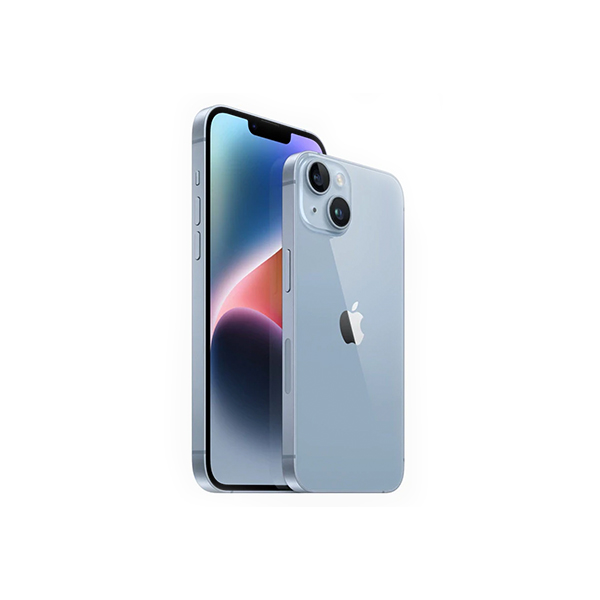
Conclusion
The Apple iPhone 14 is a strong addition to Apple’s smartphone lineup, offering solid performance, an excellent camera system, and a bright and vibrant display. While it doesn’t introduce groundbreaking changes compared to its predecessor, it refines the user experience with improved features and performance, making it a compelling choice for those in the market for a new iPhone.
In summary, the iPhone 14 is an excellent all-around device, suitable for users who want a reliable and capable smartphone that performs well in all areas, without necessarily needing the extra features found in the Pro models.
Review
Disclaimer Note
All prices in Pakistan is updated daily from the price list provided by local shops and dealers but we can not guarantee that the information / price on this page is 100% correct (Human error is possible), always visit your local shop for exact cell phone cost & rate.
